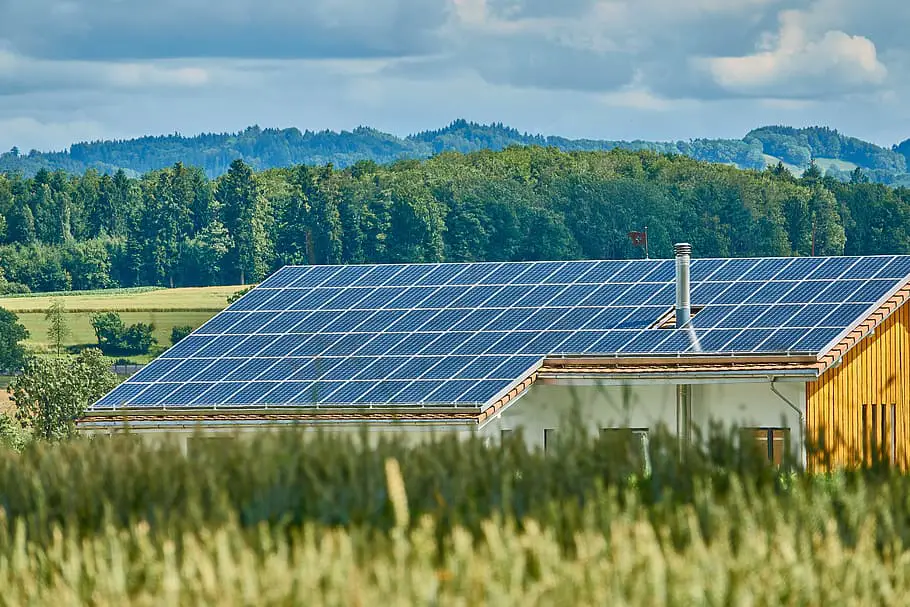
Discover how AI aids in carbon footprint reduction, steering us toward a sustainable future while transforming industries globally.
As we navigate through the 21st century, there’s one companion that’s truly revolutionizing our journey toward sustainability, Artificial Intelligence.
But you might wonder, how does this tech giant fit into the picture of environmental care?
Well, it’s fascinating to see how AI aids in carbon footprint reduction, truly transforming our traditional methods into efficient, eco-friendly solutions.
From optimizing energy usage to predicting emissions, AI is steadily becoming our reliable ally in the fight against climate change.
So, let’s dive into this exciting and crucial topic, and understand how AI is helping us tread more lightly on our beautiful planet.
How AI Aids In Carbon Footprint Reduction
Welcome to our deep dive into the world where cutting-edge technology meets environmental stewardship.
Today, we’re exploring how AI aids in carbon footprint reduction, a topic that’s not just timely but also tremendously crucial.
AI, with its dynamic capabilities, is shifting gears in how we tackle carbon emissions and environmental impacts.
From predictive emission monitoring to fostering low-carbon materials, we’re covering a wide range of AI-driven solutions.
The exciting part? This is just the tip of the iceberg! So, come along as we unravel the profound ways in which AI is reshaping our approach to sustainability and a cleaner, greener future.
Brief Overview of AI and Carbon Footprint:
Artificial Intelligence (AI) is reshaping our world in unprecedented ways.
From advanced robotics to sophisticated recommendation systems, AI permeates nearly every aspect of our lives.
And yet, its most remarkable applications may be those that connect technology and sustainability.
Enter the concept of a carbon footprint. In a nutshell, your carbon footprint is the sum of all the greenhouse gases most notably carbon dioxide that you produce as you go about your daily life.
Every time you flip a switch, take a drive or even buy a product, you’re contributing to your carbon footprint.
It’s here, at the crossroads of AI and carbon emissions, where some truly transformative work is taking place.
AI, with its ability to crunch vast amounts of data and learn from patterns, is being used to tackle the very complex problem of carbon footprint reduction.
Importance of Reducing Carbon Footprint:
Now, let’s pause and talk about why reducing carbon footprints is so crucial.
Earth’s climate is delicately balanced, and the surge in greenhouse gases from human activities is tipping the scales towards global warming and its ripple effects like rising sea levels, more intense weather events, and biodiversity loss, to name just a few.
In essence, reducing our carbon footprint is about preserving the only home we have.
It’s about handing over a liveable, thriving planet to future generations.
By curbing our carbon emissions, we can help to slow the rate of global warming and minimize the impacts of climate change.
Role of AI in Carbon Footprint Reduction:
This is where the power of AI becomes incredibly relevant.
Through its predictive modeling, decision-making capabilities, and unprecedented speed, AI can play a pivotal role in helping us reduce our carbon footprint.
In the energy sector, for instance, AI can optimize grid operations, improving efficiency and thus reducing emissions.
It can help businesses to track and manage their carbon footprint, and encourage the development of greener products and services.
In agriculture, AI-driven precision farming can improve yields and reduce waste, leading to lower emissions.
But the possibilities don’t end there. AI is also being used to develop carbon capture and storage technologies, which could help us to reduce the amount of CO2 in the atmosphere.
From smart homes that minimize energy use to AI systems that optimize logistics and supply chains for lower emissions, the potential applications are wide-ranging.
In conclusion, AI holds immense potential for carbon footprint reduction.
By leveraging its capabilities, we can move closer to a sustainable future, one where technology and ecology work hand in hand for the betterment of our planet.
Understanding AI and Carbon Footprint
Welcome to the intriguing world of AI and its intersection with carbon footprint!
In this section, we’ll unravel the mysteries surrounding these two concepts and explore the fascinating connection between them.
AI, or Artificial Intelligence, has become a buzzword in recent years, while carbon footprint refers to our impact on the environment through the release of greenhouse gases.
But how do these two seemingly different realms intertwine? Get ready to embark on a journey of discovery as we delve into the definitions, explore their connection, and uncover the ways in which AI can contribute to reducing our carbon footprint.
So, fasten your seatbelts and get ready to explore the fascinating world of AI and carbon footprint reduction!
Definition of AI:
Artificial Intelligence, or as most of us like to call it, AI has been a buzzword for a while now, hasn’t it?
And for a good reason. But let’s start from the beginning and truly understand what it means.
In the simplest terms, AI is the simulation of human intelligence in machines.
Imagine teaching a machine to think like us humans, to learn from experiences, to solve problems, to understand complex information, and to react to environmental stimuli.
That’s AI in a nutshell. It’s like giving machines a mind of their own, albeit in a limited sense.
The magic behind your digital assistants, the recommendation systems of your favorite online stores, or even self-driving cars, it’s all AI working its wonders.
Definition of Carbon Footprint:
Now, let’s switch gears and talk about carbon footprint. It sounds like quite the term, doesn’t it?
Well, it’s equally significant. Your carbon footprint refers to the total amount of greenhouse gases, specifically carbon dioxide, that you generate through your activities.
Take a minute to think about an average day. The breakfast you had this morning, the electricity that powers your home, the fuel that gets your car going, and even the products you bought last week, all contribute to your carbon footprint.
It’s a measure of how our everyday choices impact the environment.
The Connection Between AI and Carbon Footprint:
Now comes the interesting part, where we explore the connection between AI and carbon footprint.
When you first think about it, the link may not be obvious. However, AI and carbon footprint reduction are more intertwined than you might imagine.
AI, with its ability to analyze data, recognize patterns, and make predictions, has the potential to be an invaluable tool in our efforts to reduce carbon footprints.
It can help us understand where our biggest sources of carbon emissions are coming from and suggest strategies to minimize them.
For instance, AI can optimize energy usage in buildings and factories, reduce waste by improving supply chain efficiencies, and even promote cleaner transportation methods.
Its applications span across industries, all with the common goal of mitigating environmental impact.
So there you have it! The dynamic duo of AI and carbon footprint reduction, coming together to champion the cause of a greener and more sustainable world.
It’s the perfect blend of advanced technology and ecological responsibility. Who would’ve thought, right?
How AI Aids in Carbon Footprint Reduction
Here’s an exciting shift for us, as we move into the nitty-gritty of our conversation, the part where we see how artificial intelligence (AI) really becomes our superhero in the fight against climate change.
We’ve understood what AI is and the significance of our carbon footprint.
Now, let’s roll up our sleeves and delve deeper into how AI aids in carbon footprint reduction.
Let’s discover how this advanced technology can help us make smarter, more environmentally friendly choices, and create a world where sustainable living is not just a concept, but a reality.
We’ll look at real-world applications, from optimizing energy use to revolutionizing waste management and beyond.
Ready to embark on this enlightening journey? Let’s dive in!
AI in Energy Management
Energy management is one area where AI is making a massive difference.
Think about it, our industries, homes, offices, everything requires energy, right?
Now, what if we could optimize this energy usage, using it only when needed, and in just the right amount?
This is where AI steps in, working behind the scenes to monitor our energy usage patterns and make intelligent adjustments.
It can help companies understand their energy consumption in real-time, predict future usage, and identify areas of inefficiency.
By pinpointing energy waste and recommending improvements, AI enables us to manage energy more effectively, leading to lower carbon emissions.
It’s like having an invisible energy auditor, constantly working to make our lives more sustainable.
AI in Carbon Capture and Storage
We’ve been talking about reducing carbon emissions, but what about the existing carbon in our atmosphere?
AI also has a role to play in Carbon Capture and Storage (CCS), a technology that can capture up to 90% of carbon dioxide emissions produced from the use of fossil fuels in electricity generation and industrial processes.
AI can optimize these processes, ensuring they work efficiently, effectively, and safely.
It can also help in identifying suitable geological storage sites and monitoring them for any potential leaks.
It’s like AI is our environment’s safety net, capturing and storing carbon before it can add to our warming woes.
AI in Climate Prediction and Weather Forecasting
We all know how unpredictable the weather can be. But imagine if we could predict extreme weather events or understand climate patterns better?
That’s another area where AI shines. With its ability to analyze vast amounts of data, AI can help improve our climate models and weather forecasting. It can provide more accurate predictions of storms, heat waves, and other extreme weather events.
This doesn’t just help us prepare and respond better to such events but also understand how our climate is changing and what steps we need to take.
AI in Sustainable Transport
From autonomous vehicles to smart traffic management, AI is revolutionizing our transport systems.
It’s making our roads safer and our journeys smoother. But that’s not all.
By improving traffic flow, optimizing routes, and enabling efficient use of electric vehicles, AI is helping reduce emissions in the transport sector, one of the major contributors to our carbon footprint.
It’s like having an intelligent transport planner, ensuring we reach our destinations in the most eco-friendly way possible.
AI in Smart Grids
Our electricity grids are another area where AI is making waves.
Traditional grids are not very good at handling fluctuations in power supply and demand.
Enter smart grids, enabled by AI. These are electricity networks that use digital technology to monitor and manage the transport of electricity from all generation sources to meet the varying electricity demands of end users.
Smart grids can handle the unpredictability of renewable energy sources like wind and solar, integrate them better into our energy mix, and hence reduce our reliance on fossil fuels.
AI in Precision Agriculture
Lastly, let’s talk about agriculture. Yes, AI has a role to play here too.
Precision agriculture, powered by AI, allows farmers to use resources like water, soil, and fertilizers more efficiently.
AI can analyze data from soil sensors, weather forecasts, and satellite images to guide farmers on when, where, and how much to plant.
This not only leads to higher crop yields and less waste but also reduces the carbon footprint of farming.
It’s like having an intelligent farming assistant, ensuring we grow our food in the most sustainable way.
Case Studies of AI in Carbon Footprint Reduction
You’ve been riding along with me on this AI and carbon footprint reduction journey, and I’m sure it’s been quite enlightening so far.
But what does this look like in the real world? How are companies and industries utilizing AI to reduce their carbon footprint?
For that, let’s dive into some fascinating case studies. These real-world examples will show us the tangible impact of AI on carbon footprint reduction, illustrating how this powerful technology is not just a theoretical concept, but an actionable tool making substantial differences right here, right now. Let’s get started, shall we?
Case Study 1: AI in Energy Efficiency
Imagine we’re stepping into the corporate realm of Google – yes, the tech giant we all know and love.
Google’s DeepMind AI technology was put to fantastic use in their data centers to control energy usage and reduce their carbon footprint.
These data centers, responsible for running billions of searches and YouTube views, were known to consume a significant amount of energy, hence contributing to a sizable carbon footprint.
The AI system essentially ‘learned’ to predict the hourly power usage effectiveness (PUE) of the data centers and optimized cooling systems based on these predictions.
The result? A whopping 40% reduction in the amount of energy used for cooling, leading to a 15% reduction in overall PUE overnight.
This not only reduced Google’s energy costs but also significantly minimized its carbon emissions.
Isn’t it wonderful when technology and the environment go hand in hand like that?
Case Study 2: AI in Carbon Sequestration
Now, let’s venture into a different sector, forestry. Forests are our planet’s lungs, absorbing carbon dioxide and releasing oxygen.
But with deforestation rampant, our green cover is under threat. That’s where companies like SilviaTerra step in.
SilviaTerra uses AI and satellite imagery to measure the size, species, and health of trees in almost every square meter of the US.
This level of detail helps landowners understand the value of their forests, including how much carbon they store.
They even started the Natural Capital Exchange (NCAPX) project that allows landowners to get paid for growing trees, effectively encouraging carbon sequestration.
Isn’t that a refreshing use of AI to turn the tide in our favor?
Case Study 3: AI in Climate Modelling
Lastly, let’s take a peek into the world of climate modeling. Predicting future climate patterns is no easy task.
It requires processing massive amounts of data, from temperature readings to carbon dioxide levels in the atmosphere.
The UK’s Met Office, one of the world’s leading weather forecasting services, is turning to AI to help with this challenge.
They’re developing machine learning models to better understand the intricate dynamics of the climate.
These models can help scientists draw more accurate predictions about climate change, which in turn can inform policy decisions and help us prepare better for our future.
Now, that’s a classic example of AI being a crucial tool in our environmental arsenal!
These case studies shed light on the incredible ways AI is being used to tackle the pressing issue of reducing our carbon footprint.
From giant corporations to forestry, AI’s ability to analyze, predict, and optimize has proven to be a game-changer.
What’s more, they also serve as an inspiring call to action for other businesses and sectors to follow suit.
Challenges and Opportunities
Time for a little balance! As with any significant technological development, the journey of AI in reducing our carbon footprint is not without its fair share of bumps.
But don’t worry! These challenges don’t overshadow the immense opportunities that lie ahead.
In this section, we’re going to delve into both sides of the coin. We’ll look at some of the hurdles we need to leap over and the exciting prospects that beckon us in our quest to create a sustainable future with AI.
So, fasten your seatbelts, because we’re about to navigate the winding road of challenges and opportunities that AI presents in the realm of carbon footprint reduction.
Current Challenges in Implementing AI for Carbon Footprint Reduction
We’d be remiss not to address the challenges that stand in the path of AI and carbon footprint reduction.
It’s not always a smooth ride, and it’s essential to acknowledge that. One key hurdle is the significant energy consumption of AI itself.
Training complex AI models requires vast computational resources, and this, ironically, contributes to greenhouse gas emissions. It’s somewhat of a catch-22 situation.
There are also data-related challenges. AI’s effectiveness heavily relies on access to extensive, high-quality data.
However, collecting such data in the environmental field can be difficult.
Remote locations, inaccessible regions, and even political restrictions can limit the necessary data collection.
Finally, integrating AI solutions into existing systems and processes can be complicated and disruptive.
This is especially true in sectors resistant to change or those that lack the digital infrastructure required to support AI technologies.
Potential Solutions and Future Opportunities
Despite these challenges, the future looks bright, full of solutions and opportunities.
Let’s talk about the energy consumption of AI first. Yes, it’s a concern, but we’re seeing a promising rise in more energy-efficient algorithms and hardware.
The industry is responding to the problem with innovative solutions.
On the data front, improved sensors, satellite technology, and open data initiatives are making strides in overcoming data collection hurdles.
The future might also see increased cooperation between countries and organizations to share data for environmental purposes.
The integration issue isn’t insurmountable either. With growing awareness of the importance of sustainability, more sectors are open to incorporating AI solutions.
Also, developments in cloud computing and as-a-service models are making AI more accessible than ever before.
The opportunities are immense. AI has the potential to revolutionize the way we approach carbon footprint reduction.
Its capacity to optimize energy use, predict emissions, and manage resources could bring about substantial reductions in greenhouse gases.
AI could also help us understand the climate better and develop effective climate change strategies. The future is definitely AI-bright!
How AI Aids In Carbon Footprint Reduction
FAQs
In our exploration of the topic, we’re sure you’ve cooked up a few questions about how AI aids in carbon footprint reduction.
Questions are a sign of curiosity, and that’s always a good thing! So, for this section, we’ve compiled some frequently asked questions (FAQs).
Whether you’re new to the topic or just looking for some clarifications, this section should help demystify some of the most common queries. Let’s delve in!
Q: How does AI help in reducing carbon footprint?
A: AI contributes significantly to reducing the carbon footprint by improving efficiency, making accurate predictions, and promoting sustainable practices.
For instance, it can optimize energy use in various industries, predict and monitor emissions, guide the development of low-carbon materials, and help manage waste.
Furthermore, AI can aid in the design of smarter cities and sustainable transport, contributing significantly to a lower carbon footprint.
Q: What are some examples of AI applications in carbon footprint reduction?
A: The applications of AI in carbon footprint reduction are extensive and varied. Here are a few noteworthy examples:
Energy Management: AI can optimize energy consumption in buildings and factories, reducing wastage and lowering emissions.
Carbon Capture and Storage: AI can enhance carbon sequestration methods, making it more effective in trapping and storing CO2.
Climate Prediction and Weather Forecasting: By processing vast amounts of data, AI can help predict weather patterns and climate changes, informing proactive strategies for mitigation.
Sustainable Transport: AI is at the core of autonomous vehicles, promoting efficiency and reducing the need for private vehicle ownership, thereby lowering emissions.
Smart Grids: AI can help manage energy demand and supply more effectively, promoting the use of renewable resources.
Precision Agriculture: AI can optimize the use of resources in farming, thereby reducing waste and emissions.
Q: What are the challenges in implementing AI for carbon footprint reduction?
A: While AI holds immense promise in reducing the carbon footprint, implementing it is not without its challenges.
One of the key hurdles is the lack of relevant data or difficulties in accessing it.
Furthermore, there are concerns about the energy consumption of AI systems themselves, as they often require substantial computational power.
The high cost and complexity of AI systems can also be prohibitive, particularly in developing nations.
Lastly, regulatory and policy issues can sometimes pose challenges to the widespread adoption of AI for carbon footprint reduction.
How AI Aids In Carbon Footprint Reduction Conclusion
And there you have it, the journey through the realm of AI and its pivotal role in carbon footprint reduction!
We’ve explored the ways in which AI is transforming energy management, carbon capture, climate prediction, sustainable transport, smart grids, and precision agriculture.
We’ve dived into intriguing case studies, discussed challenges, and embraced the opportunities that lie ahead.
As we conclude this enlightening adventure, it’s clear that AI has emerged as a powerful ally in our mission to combat climate change and create a more sustainable future.
With continued advancements, collaboration, and innovative thinking, we have the tools to shape a world where carbon neutrality is not just a dream, but a reality.
So, let’s embark on this collective journey, harnessing the potential of AI and working together to ensure a greener, cleaner, and brighter future for generations to come.
Recap of the Role of AI in Carbon Footprint Reduction
Let’s take a moment to reflect on the incredible role that AI plays in reducing our carbon footprint.
Throughout this journey, we’ve seen how AI can optimize energy usage, predict emissions, and enhance resource management.
It helps us make informed decisions and take proactive measures to reduce greenhouse gas emissions and combat climate change.
AI’s ability to analyze vast amounts of data, identify patterns, and make accurate predictions empowers us to optimize energy consumption, develop sustainable practices, and implement efficient solutions across various sectors.
From energy management and carbon capture to climate modeling and sustainable transport, AI is a versatile and powerful tool driving us toward a more sustainable future.
By harnessing AI’s capabilities, we can make significant progress in reducing our carbon footprint and mitigating the environmental impact of human activities.
The potential for innovation, collaboration, and positive change is immense when we embrace the possibilities that AI brings to the table.
Future Prospects
As we look to the future, the prospects for AI in carbon footprint reduction are exciting.
Continued advancements in AI technology, coupled with increasing awareness of the urgency to address climate change, hold great promise.
We can expect to see further developments in energy-efficient algorithms and hardware, minimizing the energy consumption of AI systems themselves.
The expansion of data collection initiatives, including remote sensing and open data collaborations, will provide a wealth of information to fuel AI applications.
Moreover, as AI becomes more accessible and integrated into various industries, we can anticipate the widespread adoption of AI solutions for carbon footprint reduction.
This includes the development of smart cities, innovative transportation systems, and precision resource management.
Collaboration between researchers, policymakers, and businesses will be crucial in unlocking the full potential of AI.
By working together, we can overcome challenges, share knowledge and best practices, and accelerate the implementation of AI-driven solutions for a greener and more sustainable world.
The future holds immense possibilities for AI to revolutionize the way we address climate change and reduce our carbon footprint.
It’s an exciting time to be at the forefront of this technological and environmental transformation.
Let’s embrace the opportunities, forge ahead, and create a better future for our planet.







